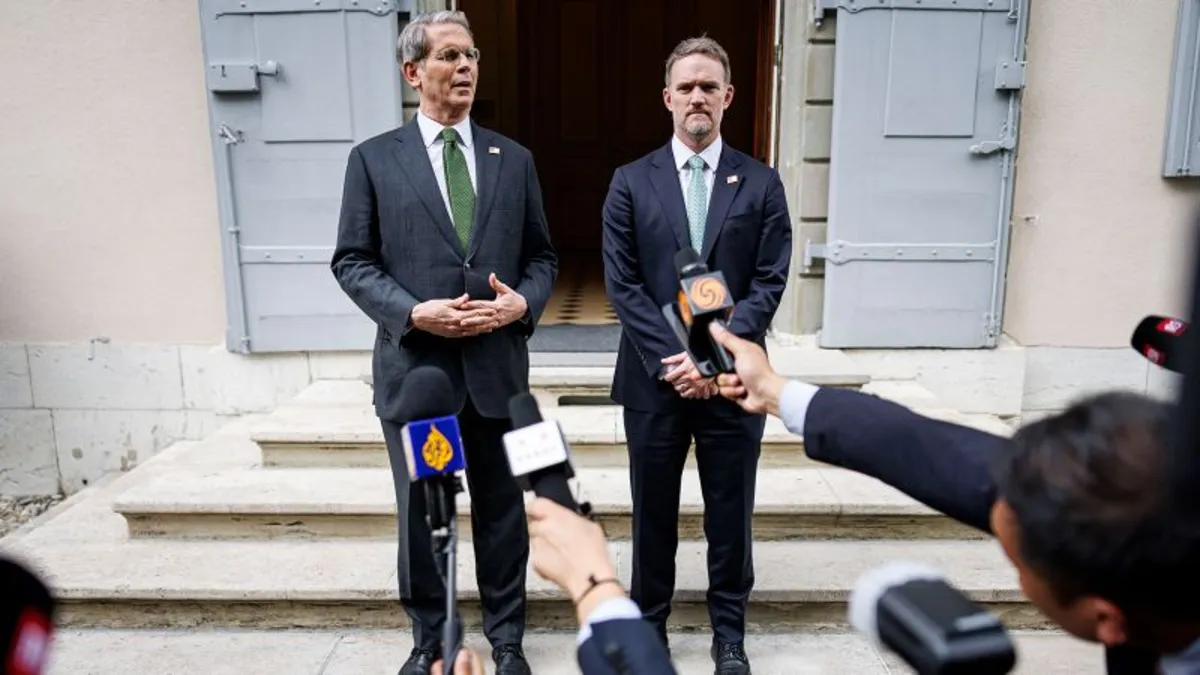
President Donald Trump has taken a bold approach with his shock-and-awe tariff strategy, which has the potential to disrupt the global financial system and push the US economy towards a recession. Amid rising concerns about the possibility of empty store shelves and a resurgence of inflation, the Trump administration has dispatched experienced negotiators to Geneva to secure a favorable outcome in trade discussions.
The recent unexpected de-escalation in trade tensions with China has laid the foundation for ongoing trade negotiations that could lead to a series of swift bilateral agreements aimed at reducing the US trade deficits. National Economic Council Director Kevin Hassett expressed optimism during an interview on CNN News Central, stating, "We actually have a fresh start with China. That’s the way to think about these negotiations."
One of the most significant developments from the two-day talks was the decision by both nations to reduce tariffs by an astonishing 115 percentage points. This marked a pivotal moment in a policy approach characterized by both maximalism and complexity. The de facto trade embargo between the world’s two largest economies had created substantial domestic and global economic pressures, bringing them to the brink of disaster.
The reduction in tariffs triggered a surge in global markets, signaling a potential shift in the strategic landscape of international trade. This development highlights a key aspect of the Trump administration’s strategy: maintaining higher tariffs while urging major trading partners to engage in negotiations. The administration's lead negotiators, Treasury Secretary Scott Bessent and US Trade Representative Jamieson Greer, are regarded as serious and levelheaded by both market participants and their Chinese counterparts.
As these negotiations gain momentum, the Trump administration's ongoing efforts to secure deals with approximately two dozen other countries received a boost from a recent small-scale agreement with the UK. This agreement serves as a model for the bespoke deals Trump aims to establish, according to several foreign diplomats involved in the bilateral discussions.
While the potential outcomes of these negotiations remain uncertain, Trump's advisors view the current trajectory as a significant improvement over previous scenarios. As one advisor noted to CNN, “this is a hell of a lot better than the alternative both of us were staring down.” A Republican senator echoed this sentiment, stating, “This is really the first time it’s been possible to actually see the path to land this plane without some cataclysmic economic disaster.”
The journey from the market-panic-inducing “Liberation Day” tariff announcement on April 2 to the current state of affairs was fraught with challenges. Despite earlier assertions from Trump’s advisors about a strategic roadmap, the reality often contradicted that narrative. Trump himself emphasized the importance of “flexibility” in negotiations, which has played a critical role in shaping the current trade environment.
Ultimately, the Trump administration has managed to establish a framework of dramatically higher tariffs, including a 10% universal rate and sector-specific tariffs that remain largely unchanged. Although trading partners are aware that tariffs will not revert to zero, many are eager to negotiate deals with the United States. The willingness of lawmakers and foreign diplomats to accept a 10% global tariff rate underscores the new reality that Trump has created in the realm of international trade.
Trump's team asserts that the shock-and-awe strategy was designed to yield a win, even amidst significant tariffs that persist. “We have had a plan, we have a process in place, now with the Chinese, we have a mechanism in place for future talks,” Bessent told reporters in Geneva. The complexity of negotiations with China is acknowledged, as these discussions are the most challenging, labor-intensive, and time-consuming.
For Trump, trade is not merely a policy issue; it is the cornerstone of his administration’s broader agenda. He has linked trade negotiations to various geopolitical matters, including the recent ceasefire agreement between India and Pakistan, which he attributes to his promises of increased trade flows to both nations. Reflecting on his unique approach to trade, Trump remarked, “People have never really used trade how I use trade.”
As the Trump administration navigates the complexities of international trade relations, the outcomes of these negotiations will be closely watched. The strategic maneuvers and the potential for economic recovery hinge on the administration's ability to foster productive discussions with its global trading partners.